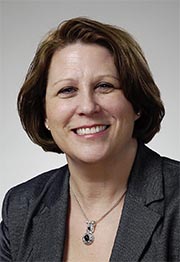The 2020 ATE PI Conference is Going Virtual
The 27th National Advanced Technological Education (ATE) Conference is going virtual! The American Association of Community Colleges (AACC), with the support of the National Science Foundation (NSF), will host the 2020 ATE Conference on October 19-23.
AACC and NSF leadership have monitored the COVID-19 pandemic with respect to the upcoming ATE Conference, including local guidance in the Washington, D.C. metro area, the current state of domestic travel and travel restrictions among educational institutions, and recommendations for convening large groups. In order to ensure the safety and well-being of the ATE community, the organizers have made the difficult decision to transition the conference, which was to be held in Washington, D.C., from an in-person event to an online experience.
The 2020 Virtual ATE Conference will consist of pre-conference workshops, keynotes, featured presentations, poster presentations, and a range of live streaming and asynchronous sessions and opportunities. This year’s event theme ATE 2020: Resilience and New Frontiers, will focus on the critical value of preparing students with STEM technical and employability skills—and the vital role community colleges and the ATE program play in preparing a highly-skilled U.S. workforce in a current- and post-pandemic economy. ATE projects and centers nationwide, in response to Covid-19, are challenged to develop strategies to successfully deliver hands-on content in an online environment such as through virtual labs, simulations, and augmented and virtual reality. The 2020 Virtual ATE Conference will include a special focus on how the ATE community has created innovative curriculum, technologies, and authentic learning experiences in virtual environments and how their resiliency, flexibility, and leadership is both addressing and shaping the current and future needs of STEM technician education.
The conference program and other information, including registration and a Call for Sessions will be available in the coming weeks. Please check back and stay tuned for updated information and further details by going to www.ATEPIConference.com.








